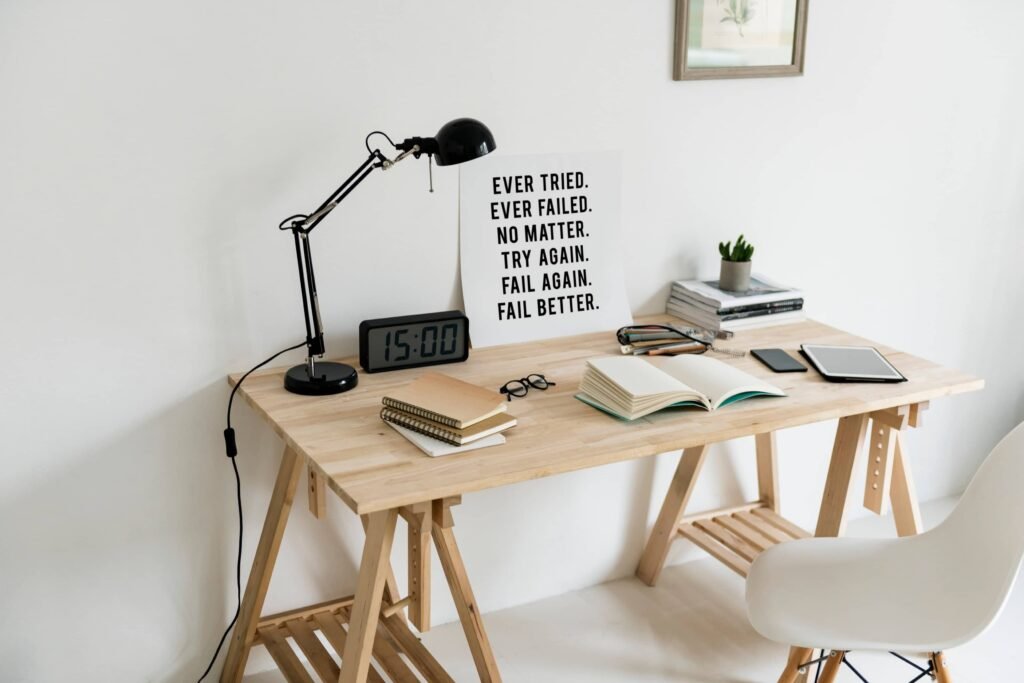Let’s be honest — we’ve all had those “I’ll start studying tomorrow” moments that never really happen. But having a solid, easy-to-follow study routine can actually make studying feel less stressful and more productive. The good news? You don’t have to be a genius or a super-organized person to build one — just a bit of planning and consistency is all it takes.
Let’s walk through how you can create a perfect study routine that actually works (and doesn’t feel like torture).
🎯 Step 1: Know Why You’re Studying
Before making a schedule, take a minute and ask yourself:
- What are your current goals?
- Are you preparing for exams, improving your grades, or just trying to stay consistent?
Knowing your purpose gives your routine direction. For example, if your exams are in a month, your routine will look different than if you’re just keeping up with weekly lessons.
Relatable example:
Sara, a college student, realized she was cramming the night before every test. She started a routine with just 1 hour a day — and her stress levels dropped a lot.

📅 Step 2: Choose the Right Time (Your Brain’s Peak Hours)
Everyone has different energy levels throughout the day. Some people are early birds, while others study better at night.
Ask yourself:
- Do you feel more focused in the morning, afternoon, or evening?
- When do you usually feel the least distracted?
Once you figure this out, block that time for focused studying.
Tip:
If you’re not sure, try different times for a few days and track which one feels the best.
📆 Step 3: Create a Weekly Study Plan
Now it’s time to map things out.
Here’s a simple format to follow:
- Monday to Friday: Focus on 1–2 subjects a day (don’t overload!)
- Saturday: Review the week’s work and do light practice.
- Sunday: Take a break or catch up on anything you missed.
Sample Weekly Plan:
| Day | Subjects | Time |
|---|---|---|
| Monday | Math, Physics | 5–6:30 PM |
| Tuesday | English, History | 6–7 PM |
| Wednesday | Chemistry, Revision | 5–6 PM |
| Thursday | ICT, Practice Test | 6–7:30 PM |
| Friday | Light review | 5–6 PM |
| Saturday | Review & Summary | 4–5 PM |
| Sunday | Rest or Catch-up | Flexible |
⏱ Step 4: Use the Pomodoro Technique
If you struggle to stay focused, try the Pomodoro method:
- Study for 25 minutes
- Take a 5-minute break
- After 4 sessions, take a longer 15-minute break
This method keeps your mind fresh and avoids burnout.
Example:
Ali uses Pomodoro when studying biology. He says it helps him stay sharp and avoid mindless scrolling during long study hours.
📖 Step 5: Mix Subjects and Break Up Tough Topics
Don’t just study one subject for hours — that’s boring and overwhelming.
Instead:
- Switch subjects every hour to keep your brain alert.
- Break hard topics into small parts and focus on one at a time.
Tip:
Start with the difficult subject first while your brain is still fresh, then move to the easier one later.
✍️ Step 6: Use a Study Planner or App
Whether you prefer digital or paper, track your routine.
Free apps like:
- Notion
- Google Calendar
- MyStudyLife
… can help you stay organized. You can also use a physical planner or a simple notebook.
Tip:
Color-code your subjects to make your planner fun and easier to follow.
📱 Step 7: Reduce Distractions
Let’s face it — phones, snacks, and random thoughts are the real enemies.
Here’s how to fight back:
- Keep your phone on silent or in another room.
- Use focus apps like Forest or Focus Keeper.
- Keep your desk clean and clutter-free.
Real story:
Fatima realized she wasted hours on TikTok while “studying.” Now she keeps her phone in a drawer during study time, and her focus has doubled.
🌟 Step 8: Add Rewards to Motivate Yourself
Studying isn’t fun all the time — but rewards help.
Try this:
- After finishing a 1-hour study block, reward yourself with your favorite snack or a 15-minute scroll break.
- After completing a weekly goal, treat yourself to a movie night or something you enjoy.
This keeps you motivated and makes the routine feel worth it.
💤 Step 9: Sleep, Exercise, and Breaks Matter
A perfect study routine isn’t just about books.
- Sleep at least 7–8 hours – tired brains don’t learn well.
- Move your body – even a 10-minute walk helps.
- Don’t skip breaks – they boost focus and energy.
✏️ Step 10: Adjust as You Go
Your first routine won’t be perfect — and that’s okay!
After a week, reflect:
- Did you stick to the plan?
- What worked? What didn’t?
- Adjust your routine based on what feels natural and sustainable.
✅ Final Takeaway: Keep It Simple and Consistent
You don’t need a fancy planner or 6 hours a day to study well. The perfect study routine is the one that fits your life, keeps you consistent, and helps you stay stress-free.
Just remember:
- Start small.
- Be flexible.
- Stick with it.
Your study routine is your roadmap — make it yours, and enjoy the journey!